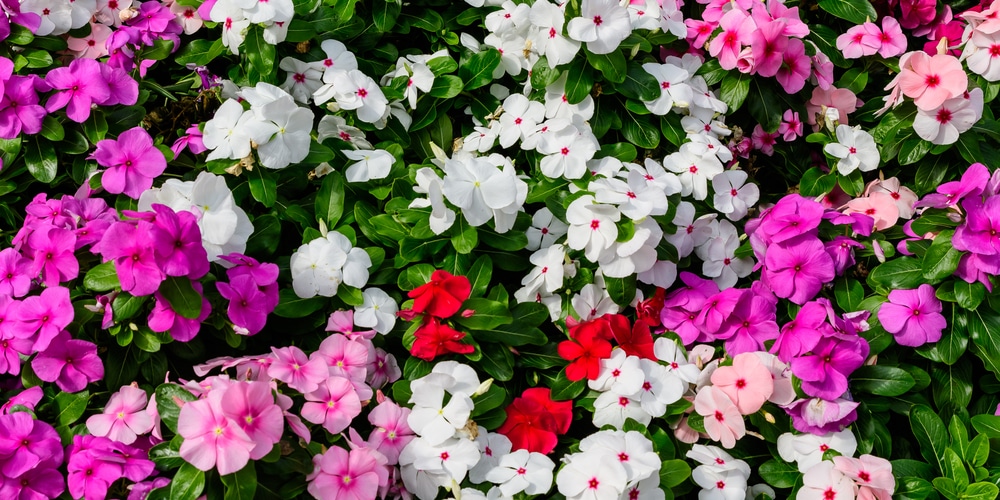If you’ve been gardening for any time, you know that certain plants are just more challenging to keep alive than others. Impatiens, a begonia relative popular for its bright flowers, is one of those plants. Let’s look at how to revive dying impatiens.
How to Revive Dying Impatiens
Impatiens are an excellent choice for beginner gardeners because they’re easy to grow and don’t require a lot of maintenance. Here are a few tips on how to help your impatiens grow and thrive:
Wait until the last spring frost to plant your impatiens outdoor. This is because impatiens don’t do well in colder temperatures; however, if you want a head start, you can plant the seeds indoors and then transplant them outdoor later.
Make sure to plant your impatiens in a sunny spot. They need at least six hours of sunlight each day to grow properly.
Impatiens prefer moist soil but can also tolerate some drought, making them a good choice for gardens that don’t get a lot of rain. To keep your impatiens looking their best, water them regularly and fertilize them once a month.
Water your impatiens regularly, but be careful not to overwater them. Impatiens do best when the soil is moist but not wet.
Fertilize your impatiens every two weeks.
When To Plant Impatiens
If you want to plant impatiens in your garden, you need to know when to do it. The best time to plant impatiens in Georgia is in early spring or late summer. You can plant them in late March or early April.
Do They Grow Well in Georgia?
It’s important to know what plants will grow well in your area. Impatiens are a great plant to grow in Georgia because they don’t need much sunlight and can withstand mild temperatures.
However, impatiens aren’t frost tolerant and will grow poorly in areas with low temperatures. Thus, although impatiens will survive outdoors during spring, summer, and fall, they won’t survive winter unless they’re in a warm place with good drainage.
Impatiens Hardiness Zones
Impatiens aren’t always hardy flowers and can only be planted in certain zones. They’re classified as a tender perennial, which means they can only be planted in USDA hardiness zones 10-11.
If you live in a colder climate, you will need to bring your impatiens inside during the winter months. Impatiens are popular in hanging baskets, pots, and gardens.
How to Maintain Impatiens in Georgia
Although Impatiens are tender perennials, most people grow these flowers as annuals. The reason behind this is that the impatiens aren’t frost resistant, and even though they survive winter the next year, they’ll be terrific.
However, you can grow your impatiens as perennials in Georgina by moving them indoors during winter.
Shrubs that grow in Georgia that Provide Privacy
Georgia’s USDA hardiness zone is 6-9, which means any shrub within this range can grow perfectly in Georgia. Here are some of the shrubs that you can grow in Georgia that offer privacy:
Anise- A shrub that does well in shade or full sun, and it has good smelling flowers. Its USDA hardiness zone is 7-10.
Aucuba- A great shrub that provides privacy and it comes in two varieties, Picturata and Gold Dust. Its USDA hardiness zone is 7-10.
Tea Olive- Has dense foliage making it perfect for privacy. Its USDA hardiness zone is 8-10.
What is bolting?
Bolting is a process that some plants go through to reproduce. It’s a type of flowering that is usually induced by changes in the environment, such as increased light or heat. The plant produces a flower stalk that eventually blooms and produces seeds during bolting.
What to Do When They Bolt?
If your plant bolts, you can do a few things to salvage it. First, try transplanting it into the correct type of soil. If that’s not possible, you can try moving it to a shady spot. If neither of those solutions works, you can simply remove the flowers or seed heads.
How to Revive Dying Impatiens: Closing Remarks
This article provides information on how to revive dying impatiens. By following the proper planting procedures, you can help your impatiens stay healthy and blooming.
Related Article: Flowers That Start With I

